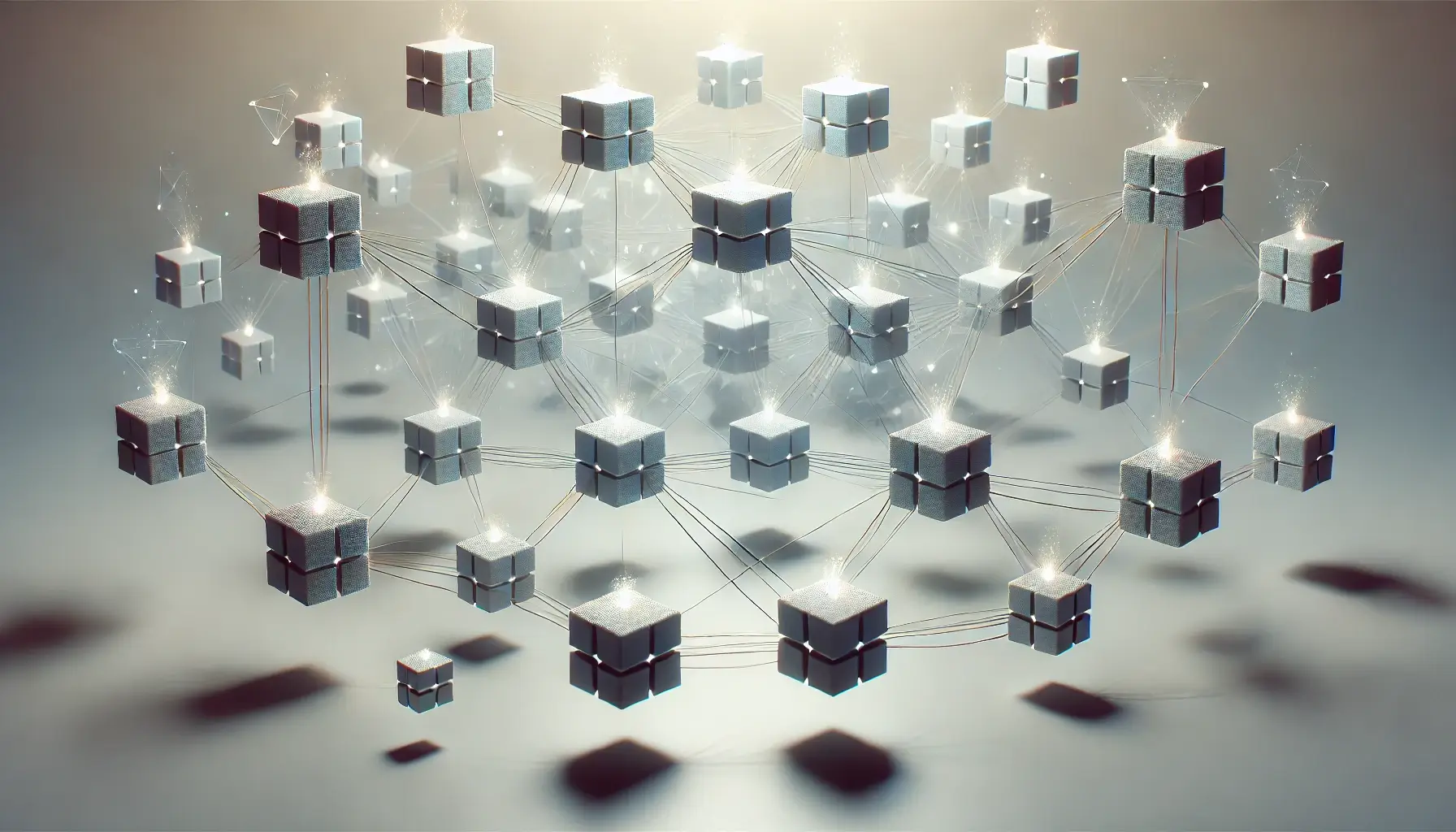Deputs a new trend in the world of cryptocurrency and blockchain . But what exactly does that mean? In simple terms, the purposes aim to decentralize the physical and digital infrastructure, such as telecommunications networks, data storage systems, and even the computing power used for activities such as graphic rendering or data processing. This allows anyone to participate in the infrastructure by becoming the owner of a part of the network, which represents a real revolution.
Table of contents
What is cloud computing and data centers?
Cloud Computing refers to the possibility of using IT services, such as data storage or calculation power, remotely via the Internet. For example, if you use Google Drive to store files or Netflix to watch movies, you use cloud computing.
Data centers are the centers where the information is stored and where the servers are located that manage these services. These data centers, sometimes called "servers", are essential for the proper functioning of the Internet, as they store and process enormous amounts of data.
How do the backdrops change the game?
Today, these infrastructures, whether data centers , cloud services telecommunications networks , are mainly controlled by large companies such as Amazon Web Services (AWS) or Google Cloud. This means that some centralized companies hold all the power in data management, storage, and even bandwidth. The purple , on the other hand, aim to democratize these infrastructure. Instead of depending on these large companies only, each user can participate in the infrastructure by providing part of their own computer power, data storage or even managing an antenna for telecoms.
Examples of companies that monopolize traditional infrastructure
Global infrastructure is currently largely dominated by giant companies. In the field of telecommunications, companies like AT&T , Verizon , or Orange control a large part of the network. As for cloud computing and data storage , these are players such as Amazon Web Services (AWS) and Google Cloud that dominate the market. These companies offer cloud services , which means that users are dependent on their infrastructure to access these services.
However, this centralization poses problems. If these companies decide to close their services or undergo breakdowns, users no longer have access to their data or their applications. In addition, these centralized infrastructures expose users to risks such as censorship or data loss.
How do the backdrop and what about physical infrastructure work?
The physical infrastructure refers to all the material elements which allow the operation of networks and computer systems. This includes, for example, telecom antennas , servers in data centers , or bandwidth which allows data to be transmitted on the Internet.
As part of the depolies , these infrastructures are decentralized. This means that, rather than being controlled by a few large companies, they are distributed among many users. Helium network allows individuals to deploy antennas to provide connectivity to the Internet of Things (IoT). In the same way, projects like Render decentralize the computing power used for tasks such as graphic rendering .
What is decentralized data storage?
Another purposes of the deppin's application is storage . In a traditional system, data is stored in data centers controlled by companies like Google or Amazon. This means that these companies have access to all stored data and may, in some cases, restrict access or delete it.
On the other hand, with a decentralized system, the data is spread over several servers belonging to different users. This guarantees greater security, as data is not controlled by a single entity and it is more difficult for anyone to modify or delete them.

Why make the physical infrastructure accessible to everyone?
The decentralization of the infrastructure aims to solve several major problems. Currently, large companies control telecommunications, storage and bandwidth infrastructure, fixing prices and limiting the flexibility of users. With the purple , these infrastructures become accessible to more diverse players, reducing costs and guaranteeing greater network resilience. The idea is to give everyone, individuals to organizations, the opportunity to contribute to these networks by providing material resources or by validating transactions.
The fundamental principles of purposes in crypto
What is a decentralized physical infrastructure (backdrop)?
A decentralized physical infrastructure allows several independent players to own, manage and participate in a network in a collaborative manner. Unlike centralized conventional infrastructure (controlled by a few companies), the purposes redistribute control and ownership of these essential infrastructures to many participants around the world.
The three main actors in the purple networks in crypto
In the purple , three types of actors intervene:
The owners of the infrastructure : they can be individuals or organizations that have elements of the physical network (such as antennas, servers or connected devices). In the case of Helium, for example, individuals deploy hotspots to provide network coverage.
Users : It is people or companies that use the services offered by the decentralized network. They can be Internet users of objects (IoT) on Helium or content creators exploiting the computing power on Render .
Validators : They play a key role by validating transactions or data on these decentralized networks. These actors also contribute to the security of the network in exchange for tokens awards.
Organizations in the purple: a risk for decentralization?
Although the purple aims to decentralize the infrastructure, it is important to note that organizations can also participate in these networks. For example, medium -sized companies or even startups can decide to invest in decentralized infrastructure to offer their services. This raises the question: can the involvement of organizations compromise the decentralized nature of the purple? The answer depends on the governance of these networks. As long as participation remains open and control is not concentrated in the hands of a few actors, the principle of decentralization is maintained.
Examples of Crypto Depinut Projects
Helium - Decentralized telecommunications network
Helium project is probably one of the most emblematic examples of the backdrop . Helium aims to decentralize telecom networks by allowing anyone to deploy a hotspot at home or in his business. A hotspot is a small device that offers network coverage for connected objects (IoT). In September 2024, the Helium network had more than 1,010,778 hotspots , mainly located in North America, Europe and Asia. The hotspots are distributed through households and businesses to provide connectivity where traditional networks do not reach.
Render - Decentralized graphic rendering
Render is an innovative solution for graphic rendering. The project allows users to rent the unused calculation power of their GPUs (graphic processors) to other users, such as content creators or animation studios. This decentralized approach to graphic calculation reduces costs for users and decreases dependence on centralized infrastructure.
Arweave - Decentralized data storage
Arweave is a decentralized storage platform, allowing to store data permanently on the blockchain. Unlike centralized solutions like AWS or Google Cloud , Arweave guarantees that data is stored forever, without risk of censorship or deletion. This offers a particularly useful decentralized storage solution for those seeking to protect sensitive data.
TheTA - Decentralized video broadcasting
Theta offers a decentralized video broadcasting network, allowing users to share their bandwidth to help broadcast streaming content. This solution aims to improve the quality of videos while reducing costs compared to centralized solutions such as YouTube or Netflix .
The role of the tokens depolum in crypto
The tokens play an essential role in the purple by encouraging users to contribute to the network. In exchange for their participation (whether by providing bandwidth, storage or computing power), users are rewarded with tokens specific to the network.
How do the tokens encourage participation in the purple?
On platforms like Helium or Render , participants receive HNT (Helium Network Token) or RNDR ( Render Token) tokens in exchange for the services they provide. This allows individuals or companies to obtain awards for their contributions to infrastructure, thus creating a decentralized economy.
staking in the backdrop: How does it work?
Stoking staking mechanism in which participants lock their tokens to secure the network. For example, on some depolition networks, validators can stake tokens to help secure transactions or validate data. The backdrop can use their own blockchains or rest on existing blockchains like Ethereum or Solana .
The advantages and challenges of poles
Increased security and resilience
Parts offer better security than centralized systems . By dividing the infrastructure between several players, it becomes more difficult for an attacker to compromise the entire network. In addition, if part of the network broke down, the other participants continue to maintain the system in operation.
Scalability
Parts are also more evolving than traditional systems. Users can easily reach the network by installing simple equipment such as hotspots or storage servers. This flexibility makes it possible to grow faster than centralized infrastructure.
Cost User and Data Safety
Parts have the advantage of reducing costs for users, eliminating intermediaries and allowing everyone to participate in the infrastructure . In addition, the purple improves data security , by offering decentralized storage which reduces the risk of leakage or data flight.
The regulatory challenges of the depolition
The backdrop will face many regulatory challenges as they develop. Governments will have to decide how to supervise these new infrastructure, in particular with regard to data security and telecommunications standards. In addition, the management of tokens used to reward participants could be subject to stricter regulations.
FAQ: Crypto purple
What is the backdrop?
Deputs (decentralized Physical Infrastructure Networks) designates decentralized networks managing physical infrastructure such as telecoms, data storage or graphic rendering.
Who owns and manages the backdrop?
The infrastructure is possessed and managed by individuals, but also by organizations of all sizes.
What services are offered by Helium, Render and Arweave?
Helium provides connectivity for IoT, Render allows graphics rendering via decentralized GPUs, and Arweave offers a permanent data storage solution.
staking in the backdrop: How does it work?
staking allows participants to lock their tokens to secure the network.
Investments in cryptocurrencies are risky. Crypternon could not be held responsible, directly or indirectly, for any damage or loss caused following the use of a property or service put forward in this article. Investments linked to cryptocurrencies are risky by nature, readers must do their own research before undertaking any action and investing only within the limits of their financial capacities. This article does not constitute an investment advice.
Certain links of this article are affiliated, which means that if you buy a product or register via these links, we will collect a commission from our partner. These commissions do not train any additional cost for you as a user and some even allow promotions.
AMF recommendations. There is no guaranteed high yield, a product with high performance potential implies a high risk. This risk taking must be in line with your project, your investment horizon and your ability to lose part of this savings. Do not invest if you are not ready to lose all or part of your capital .
To go further, read our pages legal notices , privacy policy and general conditions of use .

